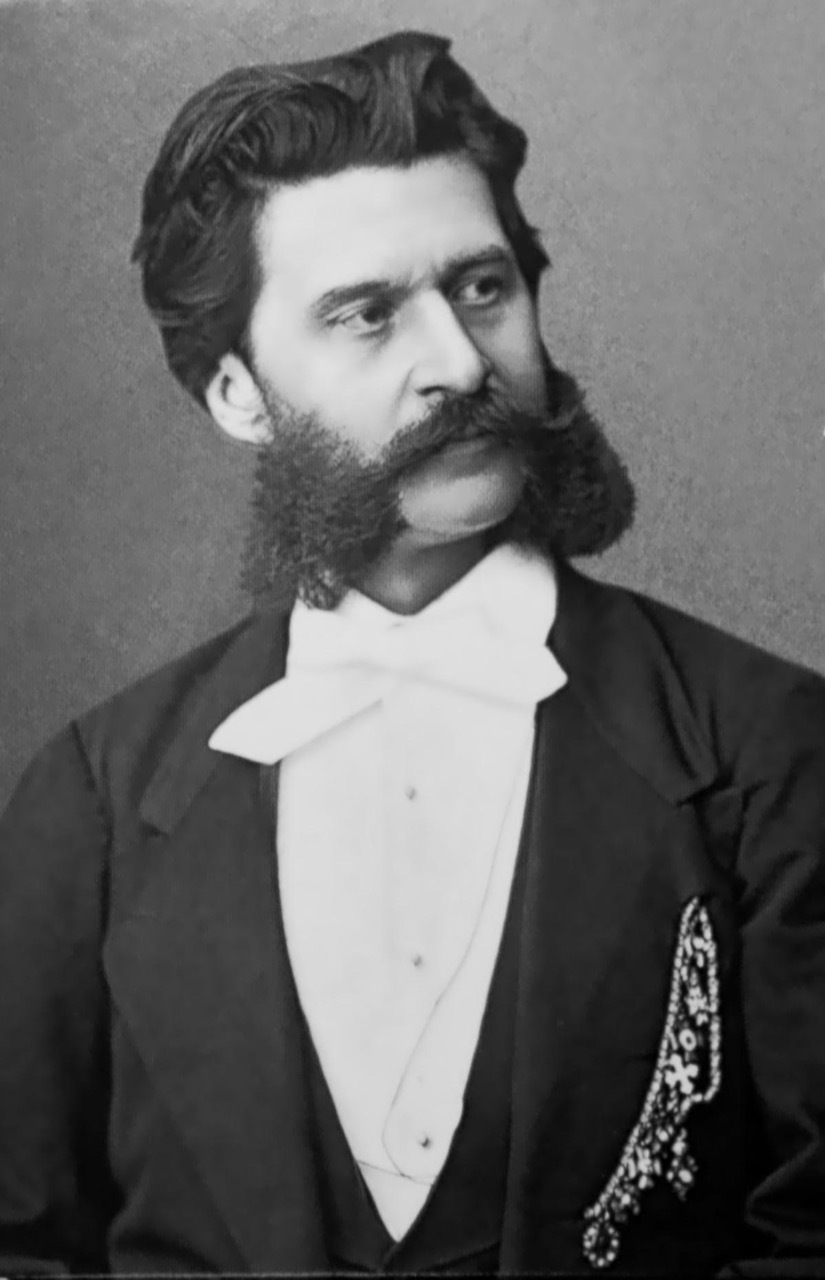Who was Johann Strauss Jr?


The theme of the Yakima Symphony Orchestra’s 2025-2026 season is Let’s Dance, honoring the 200th anniversary of Johann Strauss Jr., The Waltz King. The Symphony will feature works by the Waltz King on every concert this season, and the upcoming October 25 program is a very special all-Strauss celebration of the remarkable contributions of this 19th-century icon to musical and social life in our world.
Johann Strauss Jr. (1825–1899) was born into a musical family. His father, Johann Sr., was a very successful dance band leader in the 1800s in Vienna, Austria. Though different in instrumentation and musical styles, dance bands at that time had several things in common with bands that play for dances today—they featured popular songs and dance numbers, charismatic leaders, guest soloists, and a style of performing that resonated with the local culture.
In 19th-century Vienna, it was a big deal to attend a fancy ball (remember Cinderella?). Balls were opportunities to network, socialize, and display one’s finery. They celebrated cultural achievements, visiting dignitaries, or were just an excuse to party. There would always be live music, and couples dancing was all the rage, where people could “strut their stuff” on the dance floor. The wealthier the patron, the fancier the ball, and those sponsored by the Vienna Opera and the Imperial Court were the fanciest in town. (By the way, you, too, are invited to strut YOUR stuff in fancy ball gowns and tuxedos on October 25!)
The balls themselves developed various traditions, but the main part of the evening was the dancing. While waltzes were the most popular, other dances like polkas, quadrilles, and even marches would provide a variety of steps and moods. To give the dancers a rest, guest soloists would perform, usually singing popular songs drawn from light opera or musical theater.
As for the dancing, the waltz was the most popular, with its brisk tempos and swirling steps that encouraged showing off fancy clothes, especially elaborate gowns. Elegance and sophistication were expected, which influenced dress codes requiring tuxedos and fancy dresses, but also good dancing shoes.
The Viennese waltz originated as a peasant dance that became more varied and refined in the hands of the Strauss family. Johann Sr. added clever and charming musical devices, such as bird calls, and composed waltzes in honor of public figures or other special occasions. Following in his father’s footsteps, Johann Jr. used this foundation to create more polished symphonic musical compositions. These musical characteristics and Strauss’s showmanship resonated with high society, elevating the Viennese waltz to become a feature of the concert hall, not just the dance floor.
Johann Jr. became a sort of pop icon who traveled all over the world to conduct his own and many other works. A good current example is André Rieu, but there have been others, like Wayne King in the 1930s, or in other genres, like Duke Ellington, Paul Whiteman, or Stan Kenton. Johann Jr. composed over 500 waltzes, polkas, quadrilles, and other types of dance music, as well as a ballet and several operettas (i.e., musicals), his most famous being Die Fledermaus.
The idea of performing an all-Strauss program took root in Vienna in the 1920s and later became connected with the Vienna Philharmonic’s New Year’s Concert, a tradition that had begun 100 years earlier in the early 1800s. Cities all over the world are commemorating The Waltz King’s 200th birthday, including Vienna’s year-long celebration “Johann Strauss 2025 Vienna.” Buy tickets for our October 25 all-Strauss program of elegant dances and selections from Die Fledermaus here.
—Jeffrey Snedeker
Jeffrey Snedeker has been Principal Horn of the YSO since 1992. He is also a Board of Trustees Distinguished University Professor at Central Washington University where he teaches horn and music history.